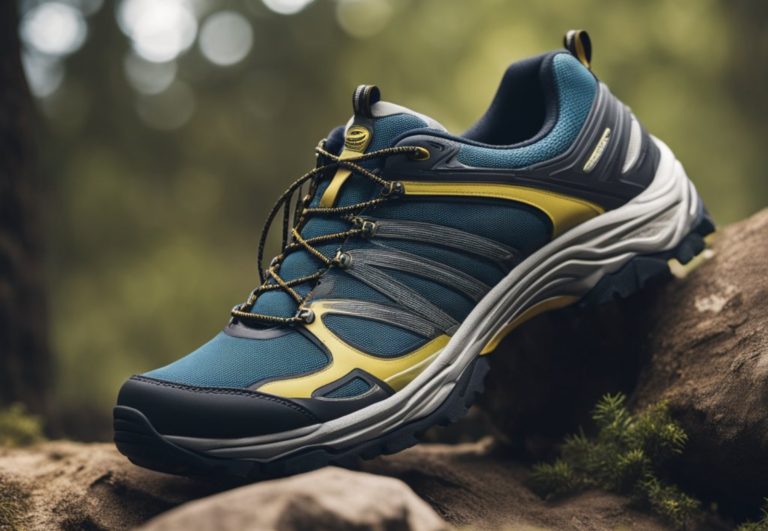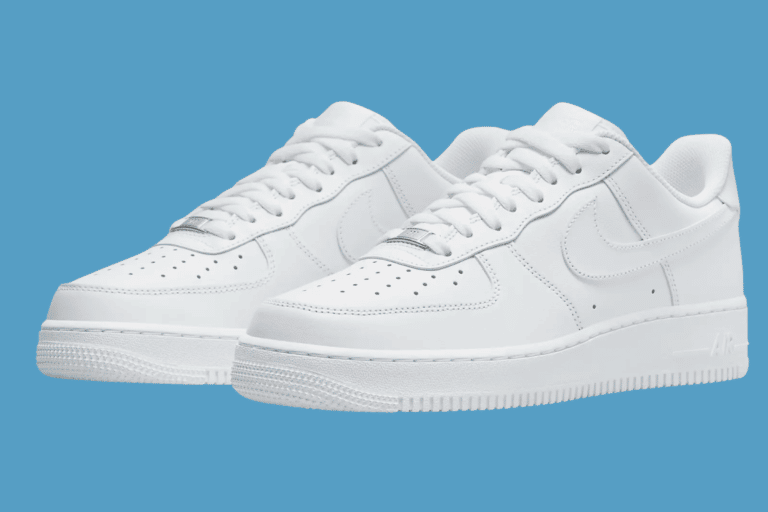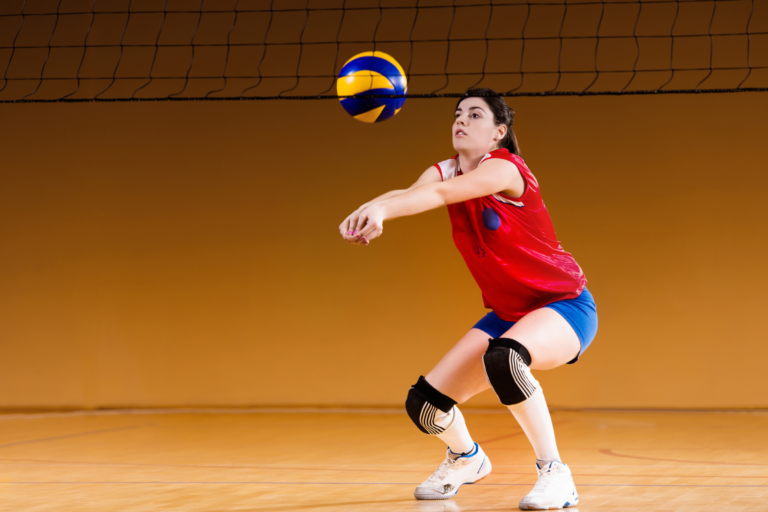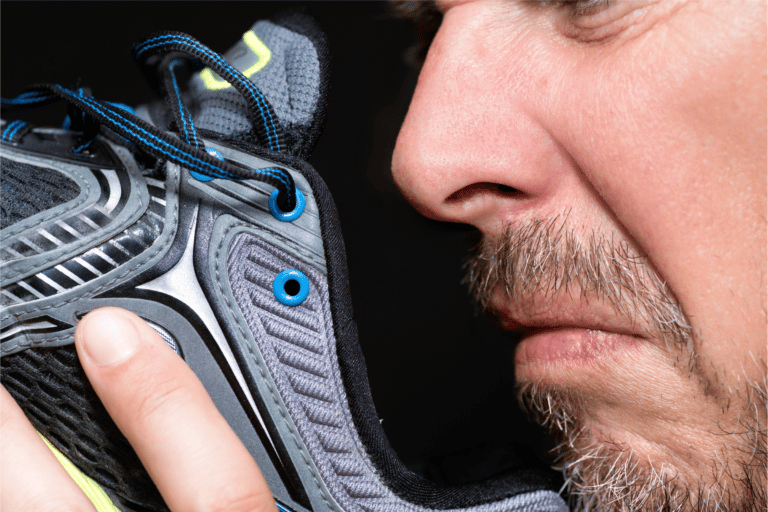How Often Should You Replace Your Running Shoes: Mileage Versus Time Considerations
When considering how often you should replace your running shoes, the general guideline is to do so every 300 to 500 miles, which ensures optimal performance and injury prevention. This mileage range accounts for the typical wear and tear on the shoe’s crucial components such as the midsole, outsole, and upper.
Factors like running frequency, style, and terrain can influence this timeline, so it’s important to monitor your shoes for signs of wear and listen to your body for cues that it’s time for a new pair. Regular maintenance and a rotation system can help extend the life of your shoes, but always prioritize your comfort and foot health over extending the life of your shoes.
Typical Lifespan of Running Shoes – When Do They Wear Out?
Typically, running shoes should be replaced every 300 to 500 miles. This range can vary depending on the materials and shoe construction. The midsole, often made from foam, is particularly vital as it provides cushion and support.
Over time, this foam loses its resilience, affecting shock absorption and increasing the impact on your joints.
Common signs that your running shoes are worn out:
- Midsole Wear: Look for creasing and feel a reduction in support.
- Sole Degradation: Check for worn-out patterns on the rubber outsole.
- Upper Damage: Notice if the material shows excessive stretching or tears.
Factors like your body weight, the surfaces you run on, and how you store your shoes can all influence their wear rate. If you run on rough or uneven surfaces, you’ll need to keep a closer eye on the sole and the external materials, as they could degrade quicker than the midsole foam.
| Mileage | Action |
|---|---|
| 0-300 | Monitor for signs of wear |
| 300-500 | Prepare to replace, especially if discomfort is noted |
| 500+ | Replace to maintain foot health and performance |
Incorporating a rotation system with another pair of running shoes can extend the life of each pair, allowing the midsoles to decompress and the shoes to air out between runs.
Keeping your running routine enjoyable and injury-free is paramount, and timely replacing your running shoes is a key element in that.
How Often Should You Replace Your Running Shoes?
Buying a new pair of running shoes might leave you wondering about the best time to replace them. The lifespan of your running shoes is typically measured in mileage rather than time.
Most guidelines suggest that you should replace your running shoes every 300 to 500 miles. This range can vary depending on your running style, habits, and the shoe’s quality.
Wear and tear is the most tangible indicator that it’s time for new shoes. Keep an eye on your soles and tread; a smoothed-out tread or noticeable wear patterns can compromise your traction and support.
Additionally, the midsole cushioning is crucial for absorbing impact. If you notice wrinkles or it feels less supportive, your shoes are no longer providing the necessary cushioning.
It’s important to note that your running style and habits play a significant role in how quickly your shoes wear down. Those who run on rough terrain, have a unique wear pattern, or run frequently might need to replace shoes on the lower end of the mileage spectrum.
Use the table below as a quick reference guide:
| Running Frequency | Suggested Mileage for Replacement |
|---|---|
| Daily runners | 300 miles |
| Regular runners | 400 miles |
| Occasional runners | 500 miles |
If tracking mileage seems cumbersome, a rough time-based rule is to consider new shoes every six months if you’re running regularly.
Listen to your body—if you experience discomfort or the shoes don’t feel as supportive, it might be time for a new pair, regardless of the miles logged. Remember, staying comfortable and preventing injury is the key to enjoying your runs.
When to Replace Your Running Shoes – 5 Factors
As an experienced runner, I’ve learned that paying attention to your running shoes’ condition is crucial for both comfort and injury prevention. Let’s explore the key signs that indicate it’s time to replace your shoes.
Sole Wear
Inspect the sole of your running shoes regularly. Uneven patterns or significant wear can signal it’s time for a new pair. Mileage typically ranges between 300-500 miles; this is when soles may start to show serious wear.
- Heavy wear in specific areas indicates a unique running style and shoe interaction.
- A flat tread or smoothed areas suggest reduced grip and possible safety concerns.
Midsole Compression
Your midsole provides vital cushioning and shock absorption. Signs that the midsole may be compressed include:
- Wrinkling on the sides of the midsole.
- A feeling of less bounce and more hardness underfoot during runs.
A noticeable change in cushioning suggests the midsoles may not be adequately protecting your joints from impact.
Upper Damage
The upper should securely hold your foot. Visible damage like tears can affect both the protective capabilities and the comfort and fit of your shoes. If the mesh or fabric is frayed or the structure seems compromised, consider a replacement.
Comfort and Fit
A change in how your shoes fit or feel during a run—such as increased discomfort or new pressure points—should not be ignored. This might indicate wear and tear that isn’t visible but can affect your running mechanics and risk of injury.
Insole Wear
Finally, look at the insole of your shoes. Over time, the insole can wear down, which may not provide the support your foot needs. If the insole is visibly flattened or reshaped, it’s a cue for new shoes.
| Component | Sign of Wear |
|---|---|
| Sole | Flattened tread, uneven wear pattern |
| Midsole | Wrinkles on side, minimal bounce |
| Upper | Frayed fabric, visible tears |
| Comfort & Fit | Unusual discomfort, change in fit |
| Insole | Flattened or misshapen |
Keep track of your mileage, pay attention to these factors, and listen to your body to know when it’s time for a new pair of running shoes.
Risk Factors for Wearing Old Running Shoes
Replacing your running shoes at the right time is crucial to avoid injury and maintain optimal performance. Worn-out shoes lack the support and shock absorption necessary to protect your joints from the repetitive impact of running.
Common Running Injuries
Old running shoes can increase your risk of overuse injuries. Some of the most common injuries associated with inadequate footwear include:
- Shin splints: Pain along the shinbone, typically caused by stress on the shinbone and the tissues attaching the shinbone to the muscles surrounding it.
- Runner’s knee: Aches and pains around the knee cap, often linked to the knee not being properly cushioned during the running motion.
- Achilles tendinitis: Inflammation of the Achilles tendon, which can stem from a lack of heel support.
Injuries like these can stem from a breakdown in the midsole cushioning and a compromised structure of the shoe, leading to reduced comfort and protective padding for your ankles, hips, and knees.
How Inadequate Shoes Affect Performance
Running in old shoes not only elevates your risk for injury but also affects your running performance negatively. Here’s how:
- Cushioning: Once the cushioning material inside your shoes is compressed beyond a certain point, it loses its ability to absorb shock effectively, which can lead to joint discomfort and fatigue.
- Support: Proper alignment is key for efficient running; old shoes can lose stability and no longer support your feet in the correct position.
- Traction and Control: The outsole of the shoe provides traction. As it wears down, you might experience slips and reduced control, especially in adverse weather conditions or on uneven surfaces.
By ensuring regular replacement of your running shoes, you give your body the foundation it needs for a safe and effective run.
Maximizing Running Shoe Life

To extend the lifespan of your running shoes, meticulous care and strategic usage are key. Regular maintenance coupled with a disciplined rotation system can preserve the integrity of your shoes, allowing you to enjoy many comfortable miles together.
Proper Shoe Care and Maintenance
Caring for your running shoes goes beyond just tying the laces. To keep them in top shape:
- Cleaning: Gently remove dirt and debris after each run. Use a soft brush or a damp cloth for the upper part and a stiffer brush for the outsole. Avoid submerging your shoes in water and certainly steer clear of the washing machine.
- Drying: If your shoes get wet, let them air-dry away from direct heat sources. Stuffing them with newspaper can help absorb moisture and maintain their shape.
Tip: Never rush the drying process by placing them near heaters or using a dryer.
- Storage: Store your shoes in a cool, dry place out of direct sunlight to prevent the materials from degrading.
| Care Aspect | Tips |
|---|---|
| Cleaning | Use appropriate brushes, avoid machine wash |
| Drying | Air-dry, use newspapers, no direct heat |
| Storage | Cool, dry area away from sunlight |
Shoe Rotation and Alternating Footwear
Introducing a second pair of running shoes can work wonders for both pairs’ longevity.
- Rotation: Alternating shoes allows the midsole foam to decompress and the shoe to dry out fully between runs.
- Versatility: Use sturdier shoes for rough terrains and lighter shoes for track work, distributing wear patterns.
Remember to listen to your body and recognize when it’s time for a new pair, regardless of care and rotation practices.
Factors Influencing Replacement Frequency
When you’re aiming for those extra miles, it’s essential to know that various factors play into how often you should replace your running shoes. Not just mileage, but also where and how you run, and your unique running mechanics can dictate the replacement frequency.
Running Environment and Surface
Your running terrain has a direct impact on the lifespan of your shoes. Trail running shoes, used on rough terrain with rocks, roots, and uneven surfaces, can wear out faster than those made for smoother surfaces like roads or tracks.
Additionally, the type of surface you run on regularly, whether it’s asphalt, gravel, or trails, can affect the cushioning and tread of your shoes. For instance:
- Road running shoes may last longer on smooth pavement but could degrade faster on abrasive surfaces.
- Running mainly on trails may require more frequent replacements due to increased shoe stress.
Consider the following table as a quick guide:
| Surface Type | Potential Impact on Shoes |
|---|---|
| Roads | Less impact, longer wear |
| Trails | More impact, quicker wear |
| Treadmill | Minimal impact |
| Mixed Terrain | Variable wear |
Climate is another aspect to consider, as extreme weather like heavy rain or high heat can break down materials and reduce shoe lifespan.
Individual Factors and Running Gait
Your weight and biomechanics influence how shoes sustain wear and tear. A heavier body weight can lead to a quicker breakdown of cushioning, necessitating more frequent shoe changes.
Your foot strike, whether you land on the heel, midfoot, or forefoot, also alters the pressure points on your shoes, thereby impacting their durability.
Running gait encompasses your overall biomechanics, which includes factors like pronation (the inward roll of the foot upon landing) and arch type. Runners with excessive pronation may see quicker wear on the inner edge of their shoes. Here’s what to look for:
- Neutral Gait: Even wear across the forefoot.
- Overpronation: Wear on the inner side of the shoe.
- Underpronation (Supination): Wear on the outer edge of the shoe.
It’s important to be aware of these factors and check your shoes’ wear patterns to determine when it’s time to update your gear. Regular assessment of your running shoes can help ensure you’re always equipped with proper support.
Professional Advice and Resources
Drawing upon expert insights can streamline your decision-making process when it’s time to replace running shoes. This section focuses on direct guidance from professionals and strategic resources that enhance your understanding of footwear maintenance and optimal performance.
Consultation with Running Experts
When it’s about extending the life and efficacy of your running shoes, advice from running experts is invaluable. Such professionals can evaluate your gait, which influences how your shoes wear down, and suggest the best time for replacement. Running stores often offer gait analysis services. This assessment can help you select shoes that cater to your unique biomechanics, potentially reducing the risk of injury and enhancing injury prevention efforts.
Making Informed Decisions on Shoe Purchasing
Your running gear plays a crucial role in your activities, and informed purchasing is key. Understand the recommendations:
- Replace shoes after 300-500 miles of use.
- High-mileage runners may need replacements sooner than the standard period.
Keep track of your mileage with apps or a running diary. If you often run less frequently, the time—rather than the mileage—might be a better indicator. Experts suggest considering new shoes every six months if you don’t reach high mileage.
Analysis from experts at your local running store can also guide you towards a fit that supports your feet for the duration of its lifespan.






